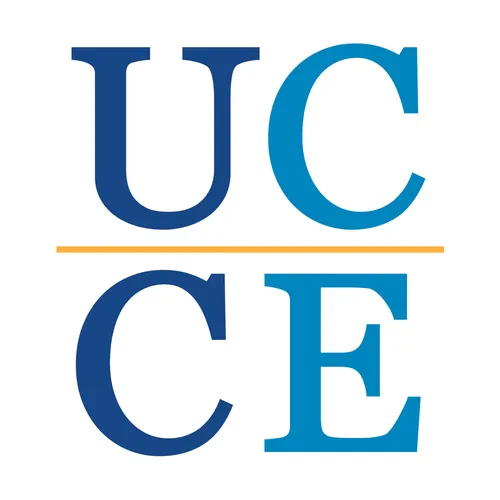
Growing the Valley
This is a podcast that goes over new research and basic information about growing orchard crops in the Central Valley of California
- Update frequency
- every 9 days
- Average duration
- 26 minutes
- Episodes
- 101
- Years Active
- 2022 - 2025

Nonstructural carbohydrates, dormancy and bloom of tree nuts
Nonstructural carbohydrates are the energy storage compound of trees. They are built from simpler sugars that are created via photosynthesis, and the synthesis of starch from these sugars and the bre…

2025 Water Outlook with Sam Sandovol Solis
Sam Sandovol Solis, professor of cooperative extension in water management at UC Davis, pulls out the crystal ball for the fourth time to predict what the 2024-2025 water season will end up looking l…

Tree nut production and water use outside of the United States
Almonds and pistachios are native to arid climates and are drought tolerant tree species. In California however, the high cost of production and land value pushes growers to maximize yields, which me…

The Future of Irrigation with Tom Devol (2024)
At a time when California orchard farmers are being challenged by poor economics and tightening regulations – coming irrigation advances promise labor and time savings. I speak with Tom Devol (retire…

Tree Destroyer: Phellinus in Prunes (2024)
Phellinus heart rot in prune trees destroys structural integrity. Laurel Hoffman (UC Davis) updates us on the biology and management of this important disease.
Come to an upcoming extension meeting!

Encore: Avocado orchard recovery after wildfire with Ben Faber
We posted this episode back in 2020 and are pulling it out of the archives. It’s an interesting story of the surprising resilience of a tree after wildfire events that are unfortunately too common.
Co…

Walnut Freeze: Remaining Vigilant
Sudden autumn freeze events still sneak up on California walnut growers – as they did to some growers last Halloween (2023). Clarissa Reyes (UCCE Sutter-Yuba) and Luke Milliron (UCCE Butte) discuss t…

Carpophilus truncatus update with Jhalendra Rijal
It’s been a year since Carpophilus truncatus (Carpophilus beetle) was found in California. Jhalendra shares some research updates and observations with host Phoebe Gordon.
Come to an upcoming extensi…

Almond Variety Trials 10 Years In
Luke Milliron, Phoebe Gordon, and Roger Duncan discuss the three almond variety trials 10 years after they were planted across the Central Valley. Thanks to our grower cooperators and to the Almond B…

Nitrogen uptake of Golden Hills and Lost Hills
Pistachios alternate bear, which changes the dynamics of nitrogen uptake and allocation within the tree on a year to year basis. To add to this, the newer cultivars, Golden Hills and Lost Hills, alte…

The Walnut Variety Trial and the Walnut Improvement Program
A Third Thursday x Growing the Valley collab! Karla Caldera (CSUC graduate student) discusses the research she is conducting at the walnut variety trial located at the Chico State University Farm (2:…

Are we measuring chill incorrectly? With Giulia Marino
Trying to predict when trees will come out of dormancy and whether they’ve stayed in dormancy for a long enough period of time is a very old science. The methods for calculating chill has changed, bu…

Encore: Potassium fertilization with Phoebe Gordon
Phoebe breaks down the importance and best practices surrounding potassium nutrition in orchard crops.
Phoebe and Franz Niederholzer wrote an excellent article on K nutrition

Isaya Kisekka on passive plant water status measurement devices
Measuring plant water status is a critical but underused tool in irrigation management. It allows us to determine whether plants actually need water, but is time consuming, done during the hottest po…

Prune Brownline Disease with Jaime Ott
Jaime Ott discusses the resurgence of prune brownline in the northern Sacramento Valley. In addition to prune, Jaime reminds us to be on the lookout for symptoms of Tomato ringspot virus in almond, p…

Sterile Insect Technique update with Houston Wilson
Houston Wilson, Professor of Cooperative Extension in entomology with UC Riverside, gives us our semi-yearly update on Sterile Insect Technique (SIT) work in Navel Orangeworm, through work completed …

Why woodchip size may matter with whole orchard recycling
Incorporating large amounts of woody biomass into soil, such as in whole orchard recycling (WOR), can promote carbon sequestration, nutrient recycling, and ecosystem health in agricultural fields. Ye…

Encore: Sarah Light on Soil Health
Soil health is broad term that encompasses a important topic: functional soil that can support human activities, animals, and plants. Measuring soil health can be difficult even for soil scientists,…

Florent Trouillas on the 2023 aerial phytophthora outbreak in almonds
In 2023 UCANR advisors and specialists got an unusual number of farm calls on branch cankers in almonds, many of which turned out to be aerial phytophthora. Florent Trouillas with UC Davis goes over …

Monterey Almond Maladies
Luke Milliron discusses the growing list of problems with the Monterey almond variety in the northern Sacramento Valley.